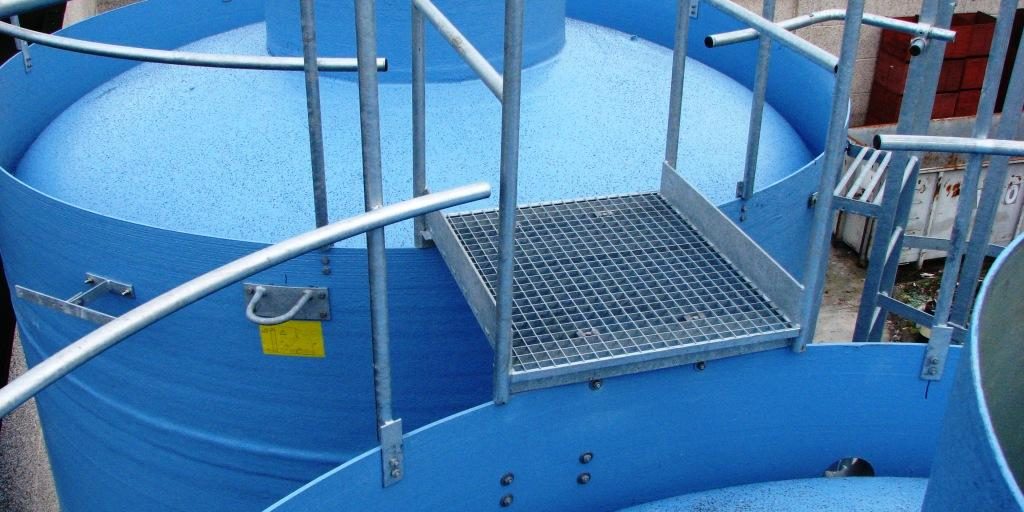Styrene is released to air during the production of composites. This is part of composite industry because the styrene is released from the resin. There are emission limiting production methods, but styrene emissions are ultimately inevitable in all production methods. In this blog we make a comparison between the different solutions for styrene emission in composite industry.
Volatile Organic Compounds
Styrene can be categorized under Volatile Organic Compounds (VOC). VOCs create smog and have a negative effect on air quality, which affects the respiratory system of humans and animals. This causes restrictions by industry and EU on the amount of styrene that can be emitted.
Solution for styrene emission in composite industry
Organizations in the composites industry now feel the pressure from government and their own responsibility to investigate emission reducing options. Styrene reduction is the ultimate goal: the road there is not always clear.
In addition to the emission-limiting options in the productions, end-of-pipe is the final solution. You can try to limit the emission in the process itself, but if that does not work or if it works only partially then you have to solve the problem “end of pipe”. Using end of pipe technologies allows the industry to maintain their current production methods.
From adsorption to biological treatment
There are roughly three techniques that can effectively remove styrene from airflows:
1. Adsorption (Activated Carbon)
The air is passed through a package of activated carbon. The styrene is trapped in the activated carbon until it is filled with styrene. When the carbon is full, the carbon must be replaced. Activated carbon can also be regenerated, reducing costs by 25% – 30%.
Transport and other costs then weigh heavily on operational costs. The often high pressure drop (resistance) of the activated carbon package also means high electricity costs for the fan. The CO2 footprint of AC is mainly determined by the carbonization of the raw material for the AC, the repeated regeneration furnaces, the energy consumption due to the high pressure drop and the transport. Acetone will not or hardly be adsorbed by activated carbon, the acetone in the final emission of mg C / Nm3 must be taken into account.
2. Burning (afterburners, incinerators or RTOs)
The air is led in an afterburner over a ceramic bed that is brought to a high temperature. When the air is brought to about 850 degrees Celsius, the styrene will burn. Obviously, the air is too “styrene-poor” to burn on its own, so fossil fuel must be used to raise the air temperature to 850 degrees.
The operational costs mainly consist of this heating energy. But the pressure drop in afterburners also means high electricity costs for the fan. The ceramic bed needs to be replaced once every 10 years, these are often costs that are about 50% of the investment. The CO2 footprint of the afterburning is of course mainly determined by the use of fossil fuel to keep the ceramic bed at that high temperature and the electricity consumption due to the high pressure drop of the afterburner.
3. Biological Treatment
In modern biological reactors the air is passed over a bed of plastic rings. A biological layer is deposited on these rings, who consume the styrene from the air, so that the air is “eaten” cleanly. The installation is built entirely out of plastic with a composite housing. As a result, the life of this installation is very long and the operational costs are very low. The investment costs of a modern biological reactor are often higher than the other options. Many companies in the composite industry that opt for a biological system produce parts for this form of styrene removal themselves.

Because the biology ensures the styrene removal, the operating costs are very low, especially compared to the options activated carbon and afterburning. The low pressure drop also ensures that the electricity costs of the fan are very low. Heat recovery can also still take place. The CO2 footprint of this installation is very low because no energy is required for the actual styrene removal, the very long lifespan of the installation through the use of plastics also guarantees a minimal CO2 footprint.
Opt for a sustainable and cost efficient solution
Roughly speaking, a financial comparison for the different techniques will follow the lines as shown graphically below. Here you can clearly see the effect of the choice of the different techniques on the total costs in the longer term. We assumed a fictional production location with a styrene emission of 4 kg styrene per hour and a total production hour of 6500 hours per year. We have included capital costs as 3%, costs for activated carbon are set at 3/kg and a load of 25% styrene / carbon (m/m).

Often choices are made based on the or/or principle. Either a good price or a beautiful world. This isn’t necessary when you’re battling the styrene emission in your factory: an environmentally conscious technique also has financial benefits over time. Choosing biological treatment by Pure Infinity is choosing a sustainable, environmentally conscious and cost-efficient solution.
We are happy to help your organization with a custom design for the VOCUS. Get in touch with us over here to discuss the possibilities!

